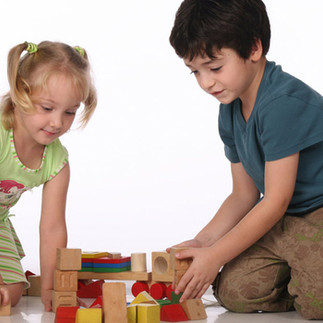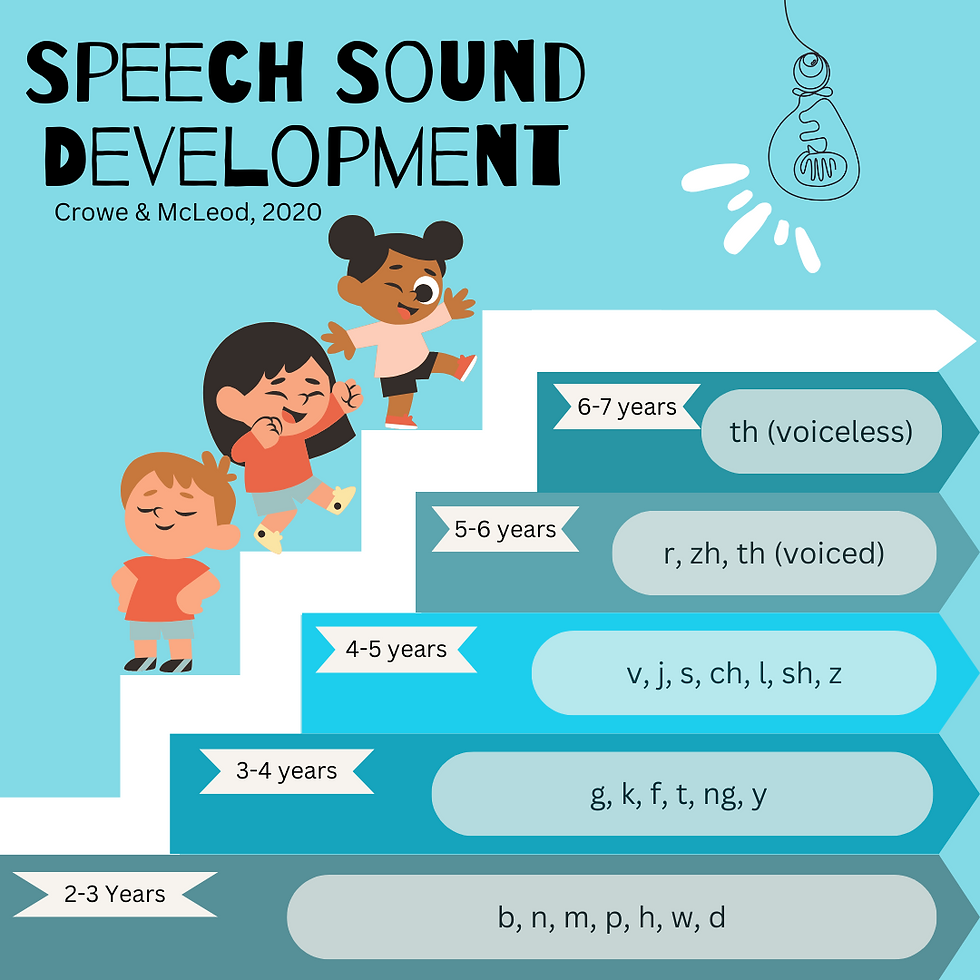What is Joint Attention and Why is it Important?
- Erin Swinkels
- Sep 15, 2023
- 4 min read
What is Joint Attention:
Joint attention is intentional shared focus on an item, event or activity with a communication partner as a part of a social interaction.
A child learning to engage in joint attention will need to:
Share attention: attend to a shared item, event or activity
alternate gaze aka: social referencing
Follow attention: respond to a bid to pay attention to what another individual is focused on (RJA: joint attention - responding)
orient their attention and shift their gaze based on communication partner's gaze or point
Direct attention: draw someone else's attention to something they are focused on (IJA: joint attention - initiating).
Put another way, joint attention is the ability to simultaneously and intentionally attend to items, events, or activities in the environment while engaging in social referencing. The outcome of the interaction is purely social.
Joint attention typically begins to emerge between 4-6 months (when a child begins following a parent's gaze, or what they are looking at; joint attention - responding). By 8-9 months typically a child is able to point to things in the environment and begins to engage in social referencing by checking their caregiver's gaze (early joint attention - initiating). By 15 months most typically developing children will demonstrate all component skills of joint attention and by 2-3 years of age children are typically able to gain and maintain joint attention from both adults and peers. Responding typically emerges before initiating joint attention.
What this looks like:
What Joint Attention is not:
It is not independent or parallel play (unless the child has initiated a social partner to join attention with what they are doing).
It is not observing other people or items in the environment in the absence of social interactions (i.e., being an onlooker).
Joint attention is not reciprocal social interactions or simply sharing a moment with someone else (e.g., sitting with a parent, parent tickling child etc...).
Joint attention is not a child asking for something like a snack, even if they draw their caregivers attention to the snack.
Why is Joint Attention so important?
Joint attention is pivotal for building social relationships and connections with adults and peers
Joint attention supports vocabulary development when the communication partner labels the item that both individuals are attending to
Joint attention promotes social interactions as positive, worth-it things to continue engaging in. It also supports eye contact through monitoring the communication partner's gaze
Joint attention skills demonstrated by 12 months has been shown to predict social and behavioural competence in children
Joint attention is an early developing skill that has been linked (along with imitation and object play) with better language development outcomes in autistic children
How to encourage this skill:
When you are asking your child to attend to something, make it worth their while - base it on their interests, initially only ask them to look at something that is more exciting than what they are currently doing (from their perspective).
Use fun exclamations when something unexpected happens or you hear or smell something in the environment. For example, if something crashes or spills a dramatic "oh no!" or "uh oh" with exaggerated facial expressions can signal to your child that there is something to pay attention to. If you hear the garbage truck coming (assuming this is a preferred time of the week), "oh! I hear something coming!" and help your child to the window or porch to watch.
Use preferred toys and activities and try to join in on your child's play versus placing demands to copy what you are doing or lead the play (i.e., model responsive joint attention).
Build routines into play (JAR: Joint Activity Routines) to build expectation and opportunities to socially reference the play partner and actively engage in a shared activity.
Selected References:
Beuker KT, Rommelse NJ, Donders R, Buitelaar JK. Development of early communication skills in the first two years of life. Infant Behavior & Development. 2013;36(1):71–83
Bruinsma, Y., Koegel, R. L., & Koegel, L. K. (2004). Joint attention and children with autism: a review of the literature. Mental retardation and developmental disabilities research reviews, 10(3), 169–175.
Dube, W. V., Macdonald, R. P., Mansfield, R. C., Holcomb, W. L., & Ahearn, W. H. (2004). Toward a behavioral analysis of joint attention. The Behavior analyst, 27(2), 197–207.
Gabouer, A., & Bortfeld, H. (2021). Revisiting how we operationalize joint attention. Infant behavior & development, 63, 101566.
Isaksen J, Holth P. An operant approach to teaching joint attention skills to children with autism. Behavioral Interventions. 2009;24(4):215–236.
Poon, K. K., Watson, L. R., Baranek, G. T. & Poe, M. D. (2012). To What Extent Do Joint Attention, Imitation, and Object Play Behaviors in Infancy Predict Later Communication and Intellectual Functioning in ASD? Journal of Autism and Developmental Disorders, 42, 1064–1074.
Vaughan Van Hecke, A., Mundy, P. C., Acra, C. F., Block, J. J., Delgado, C. E., Parlade, M. V., Meyer, J. A., Neal, A. R., & Pomares, Y. B. (2007). Infant joint attention, temperament, and social competence in preschool children. Child development, 78(1), 53–69.
Weisberg, H. R., & Jones, E. A. (2018). Individualizing Intervention to Teach Joint Attention, Requesting, and Social Referencing to Children with Autism. Behavior analysis in practice, 12(1), 105–123.





















